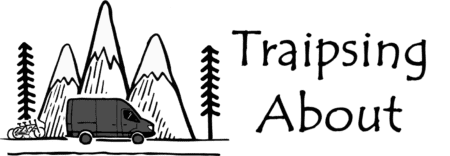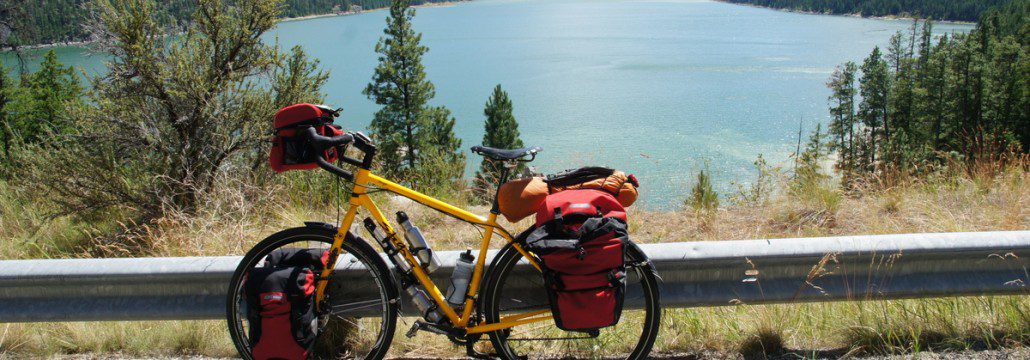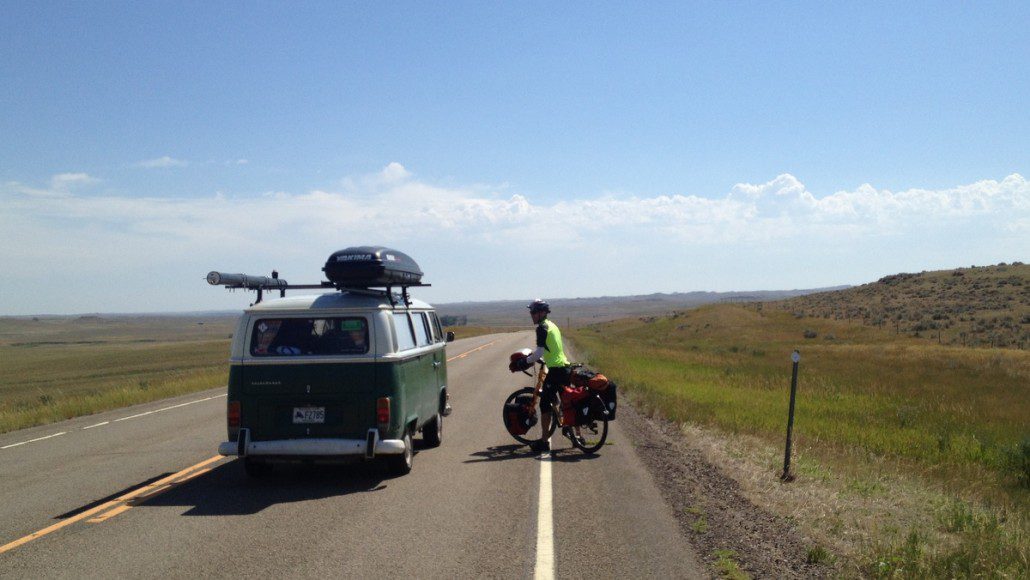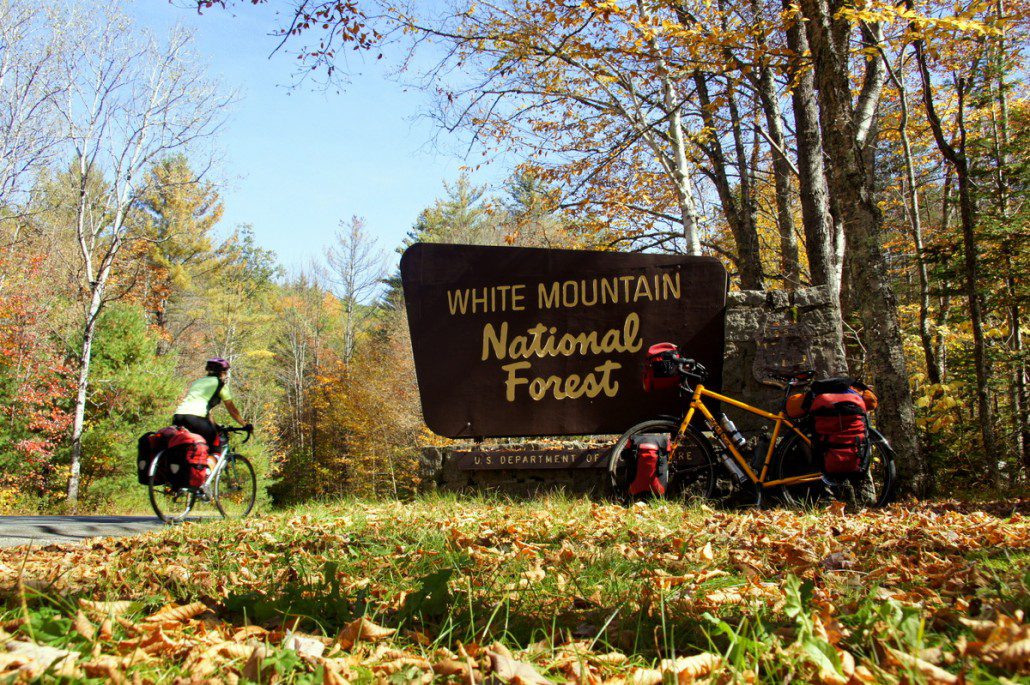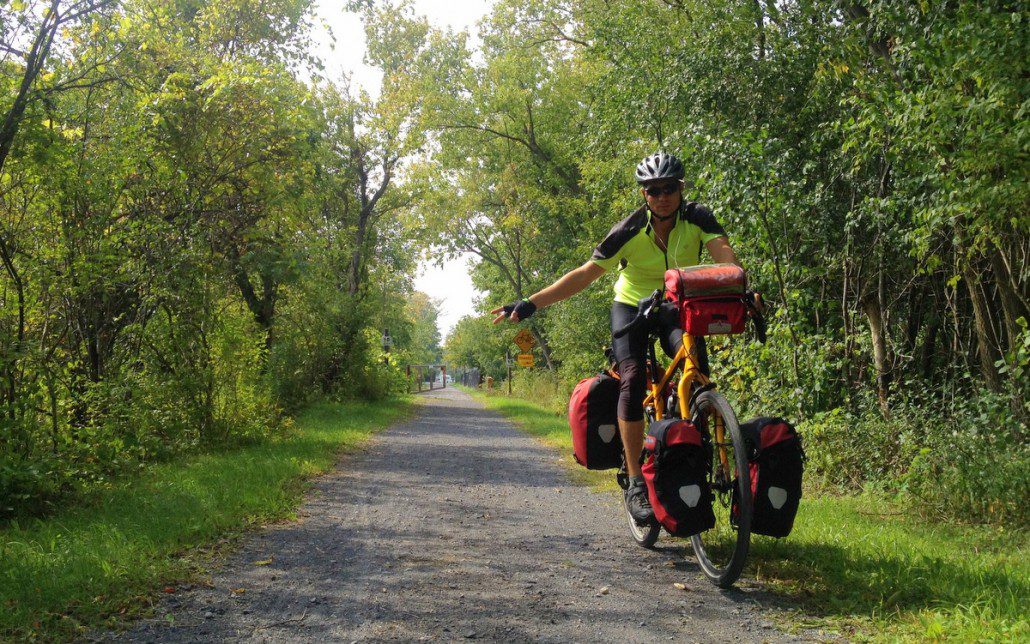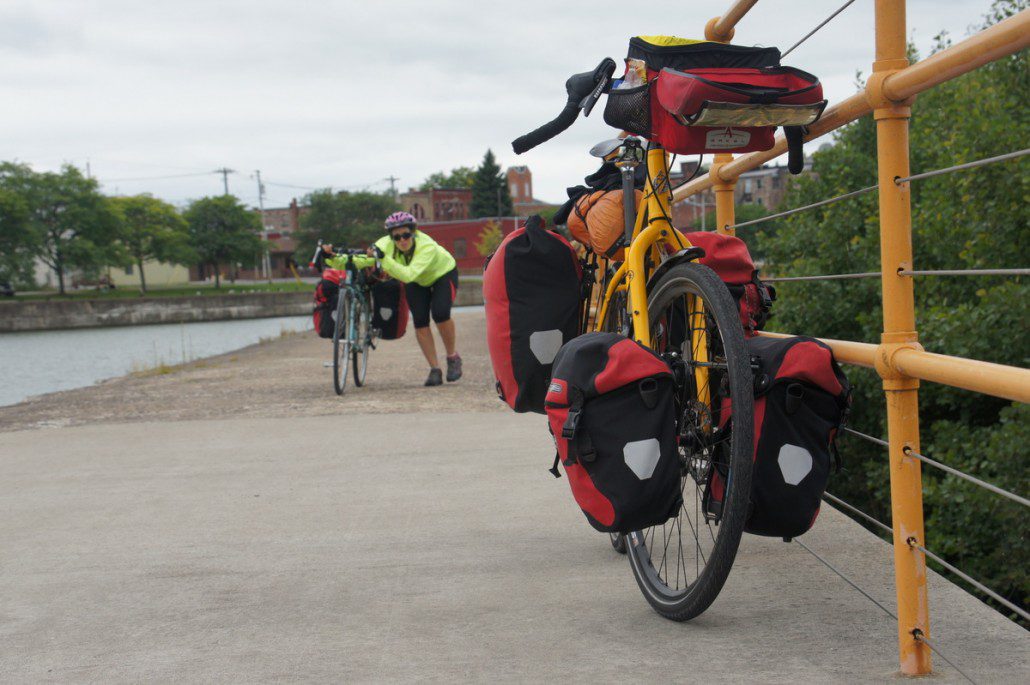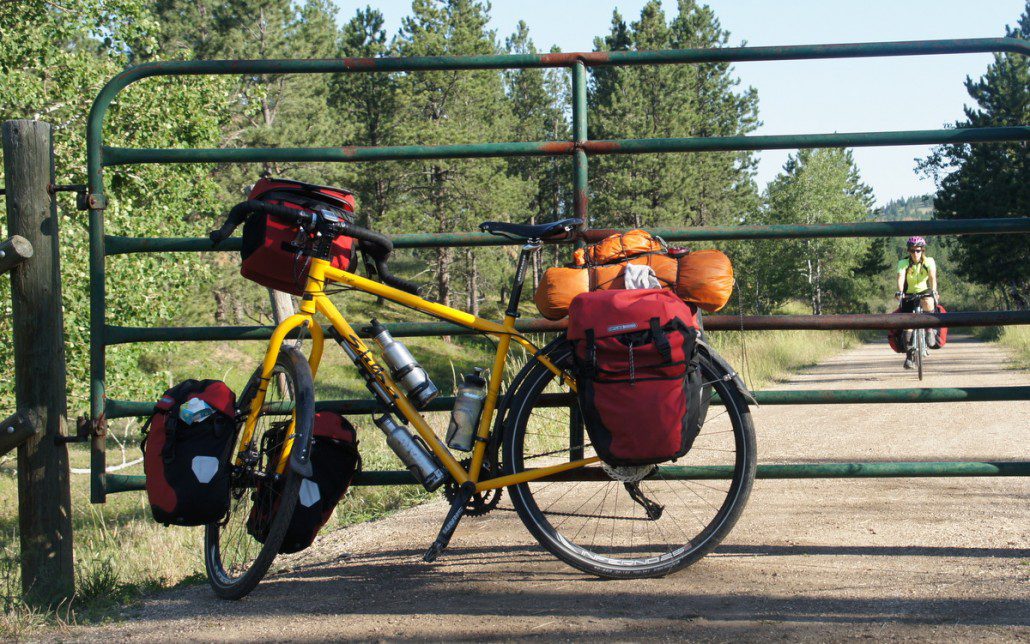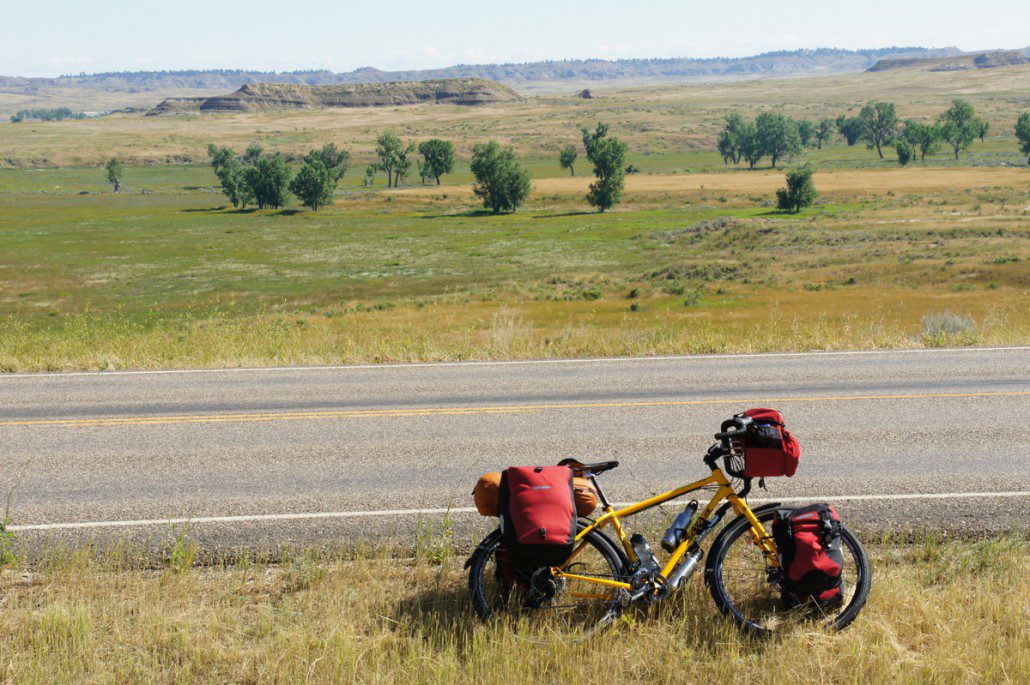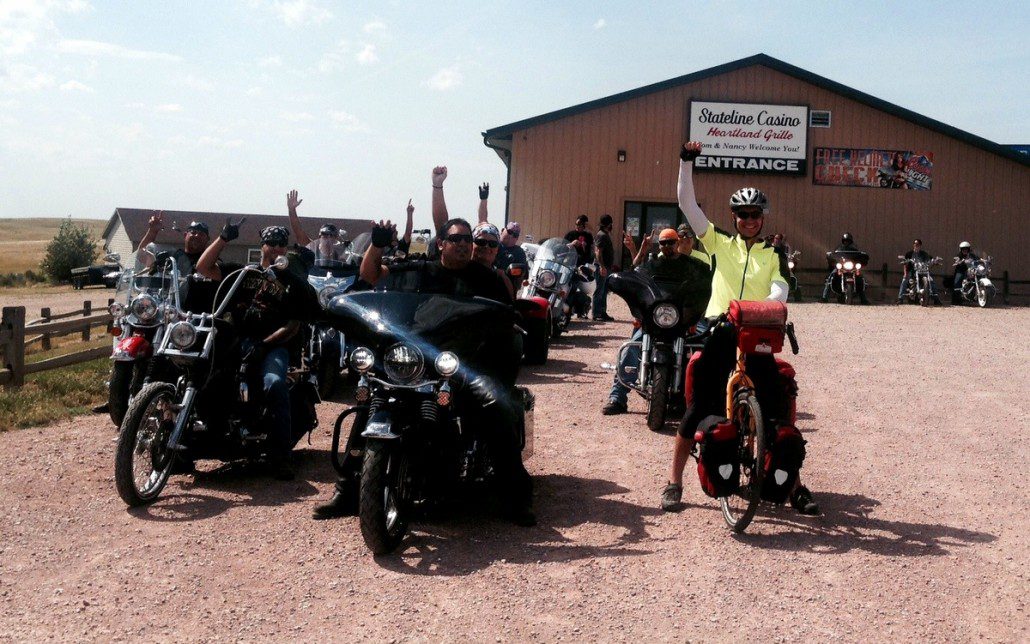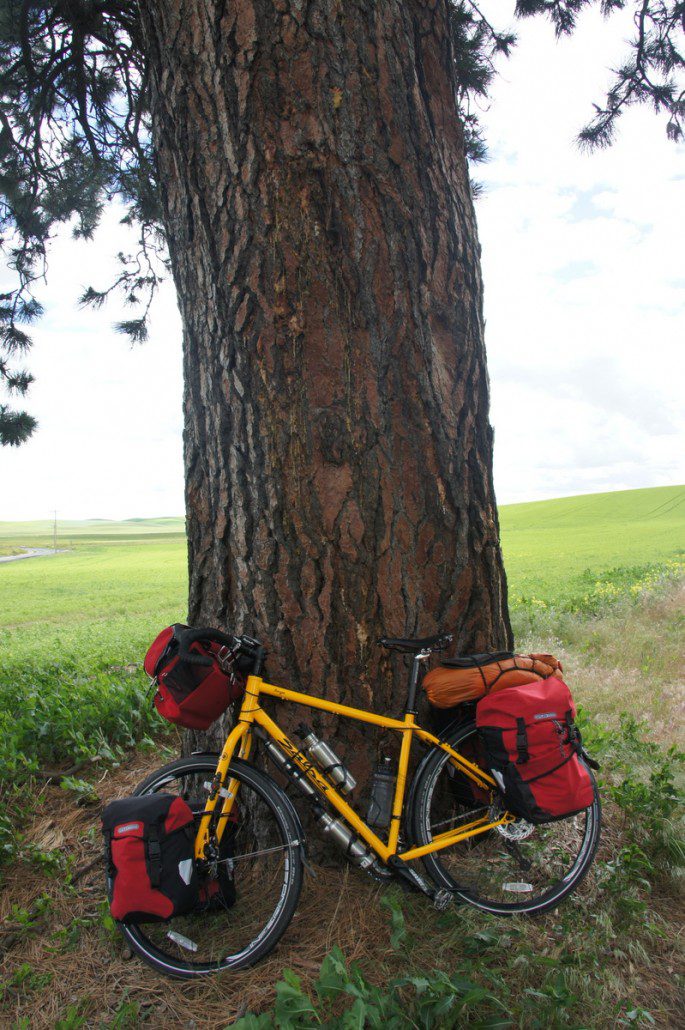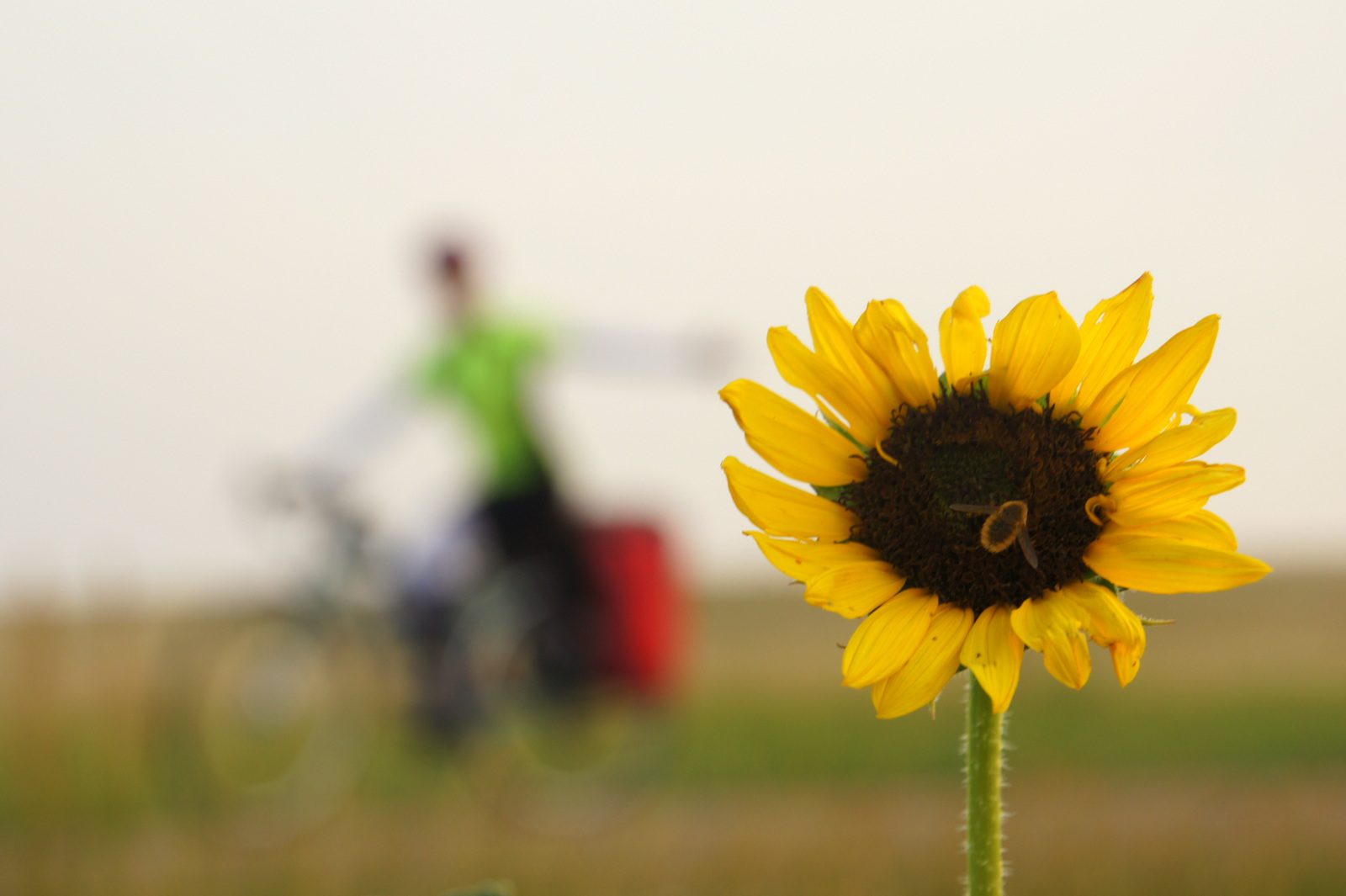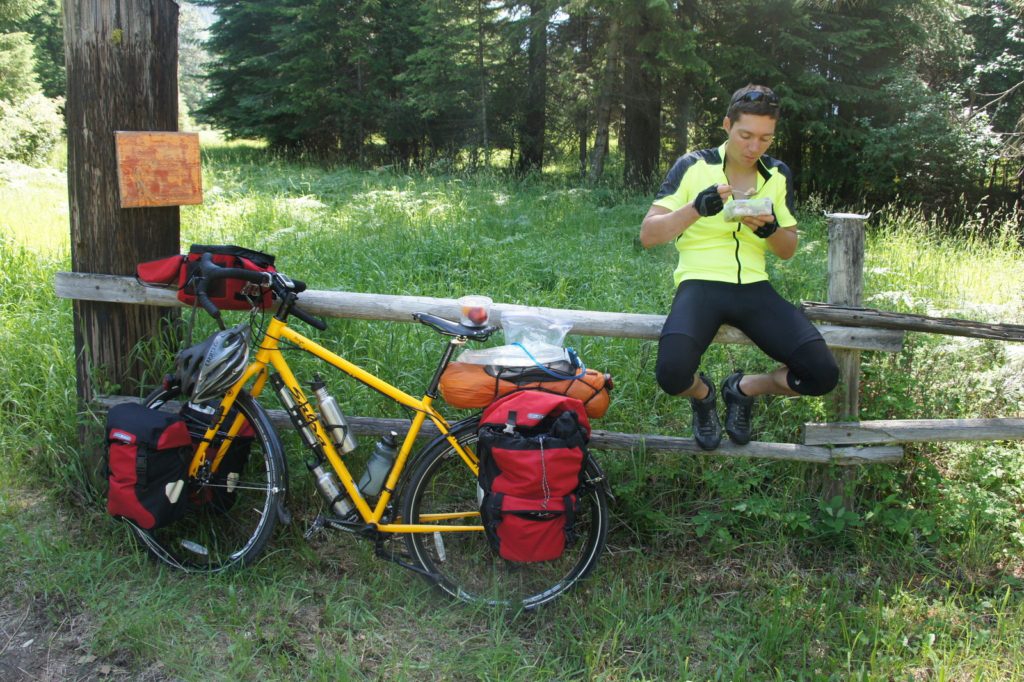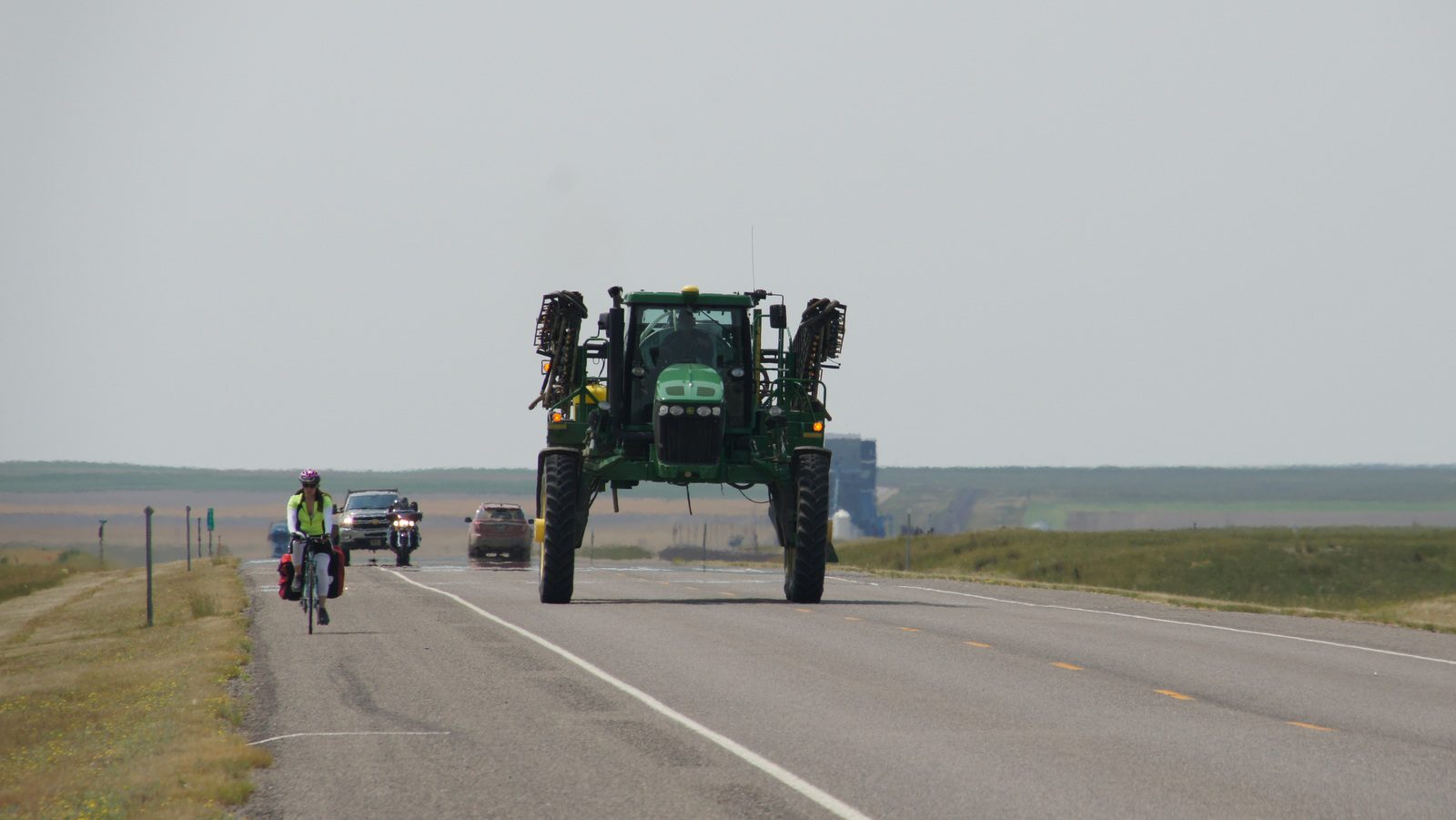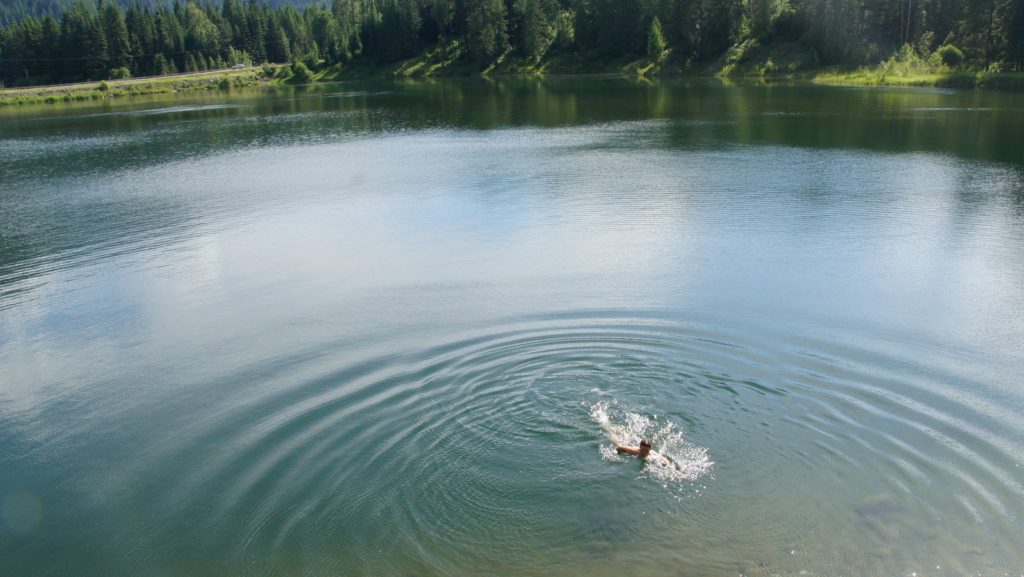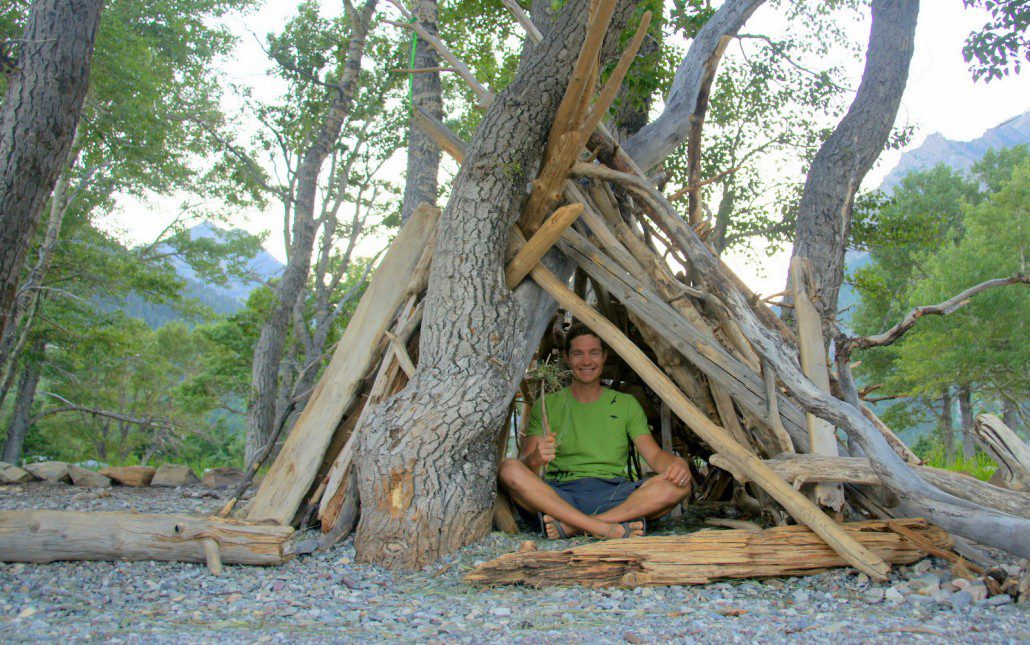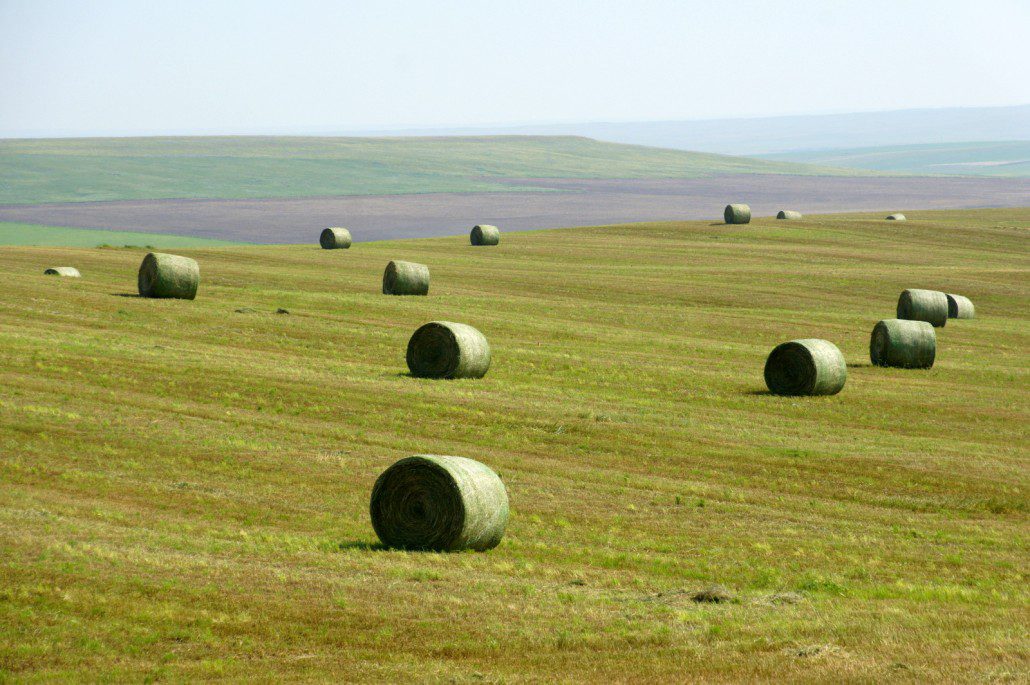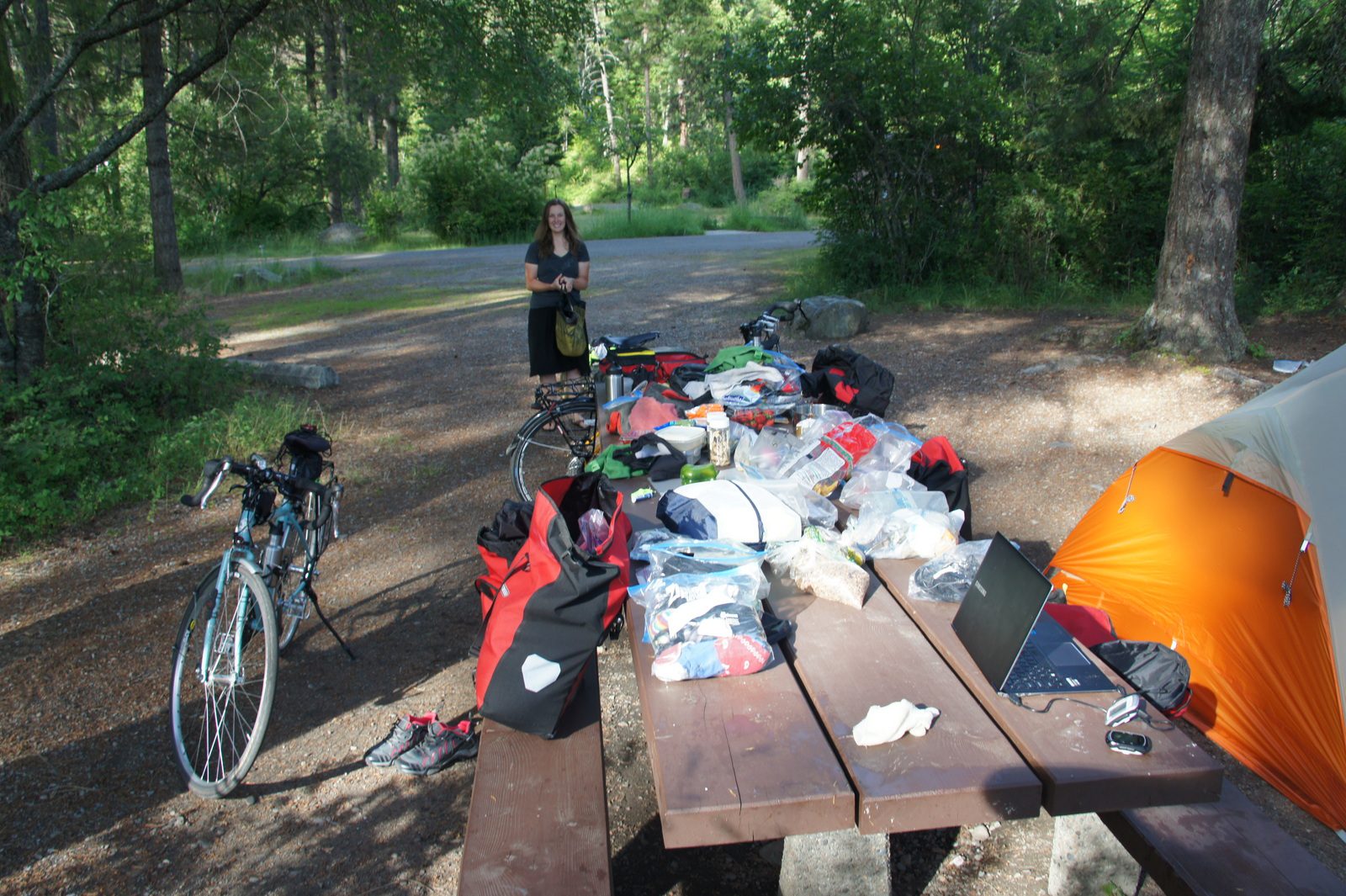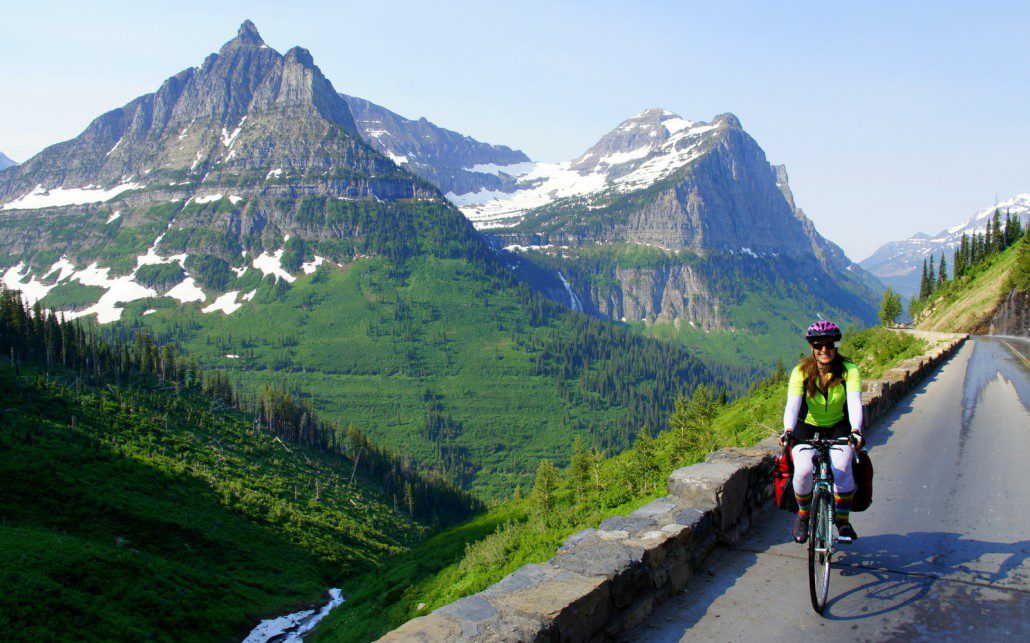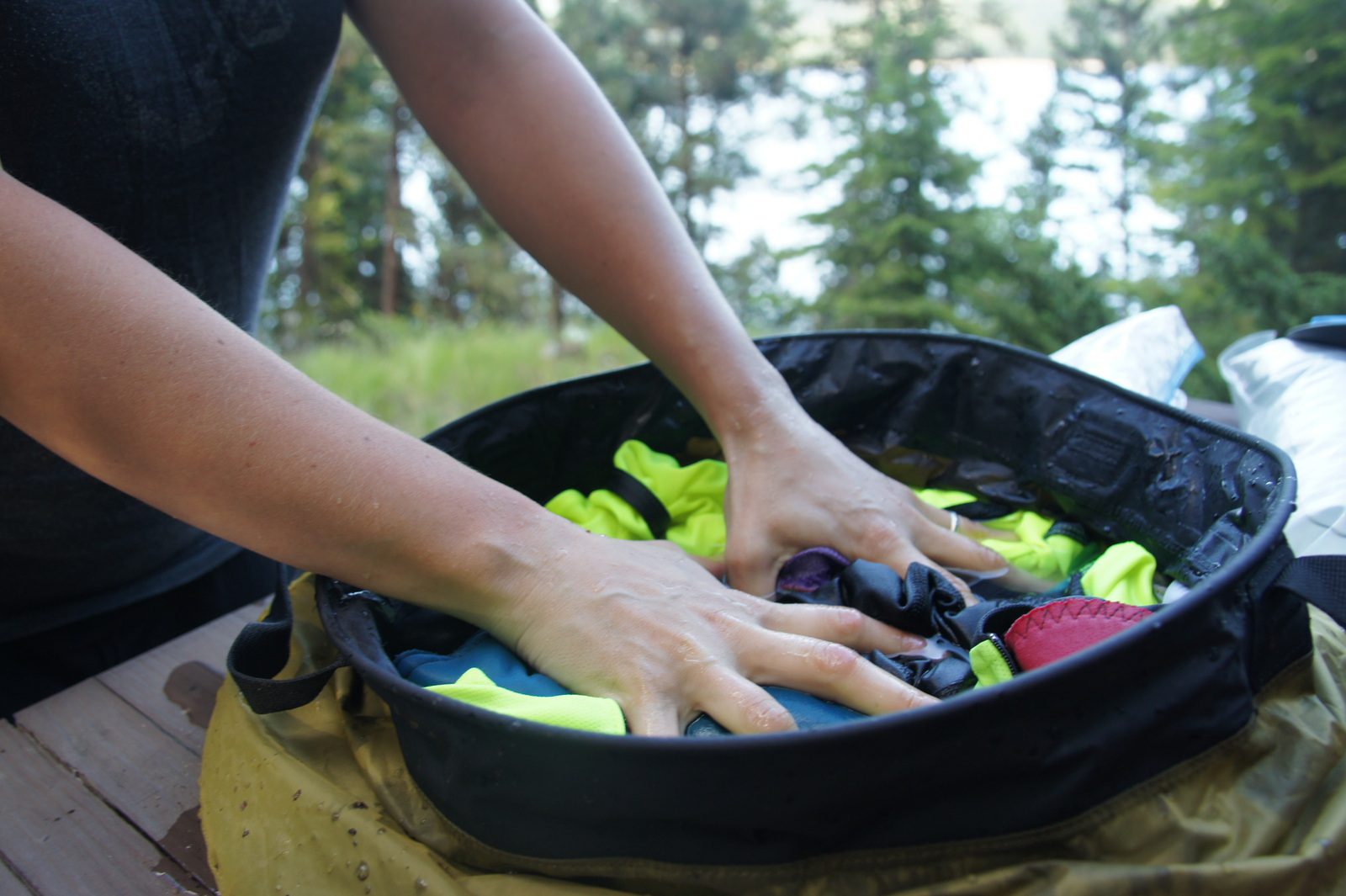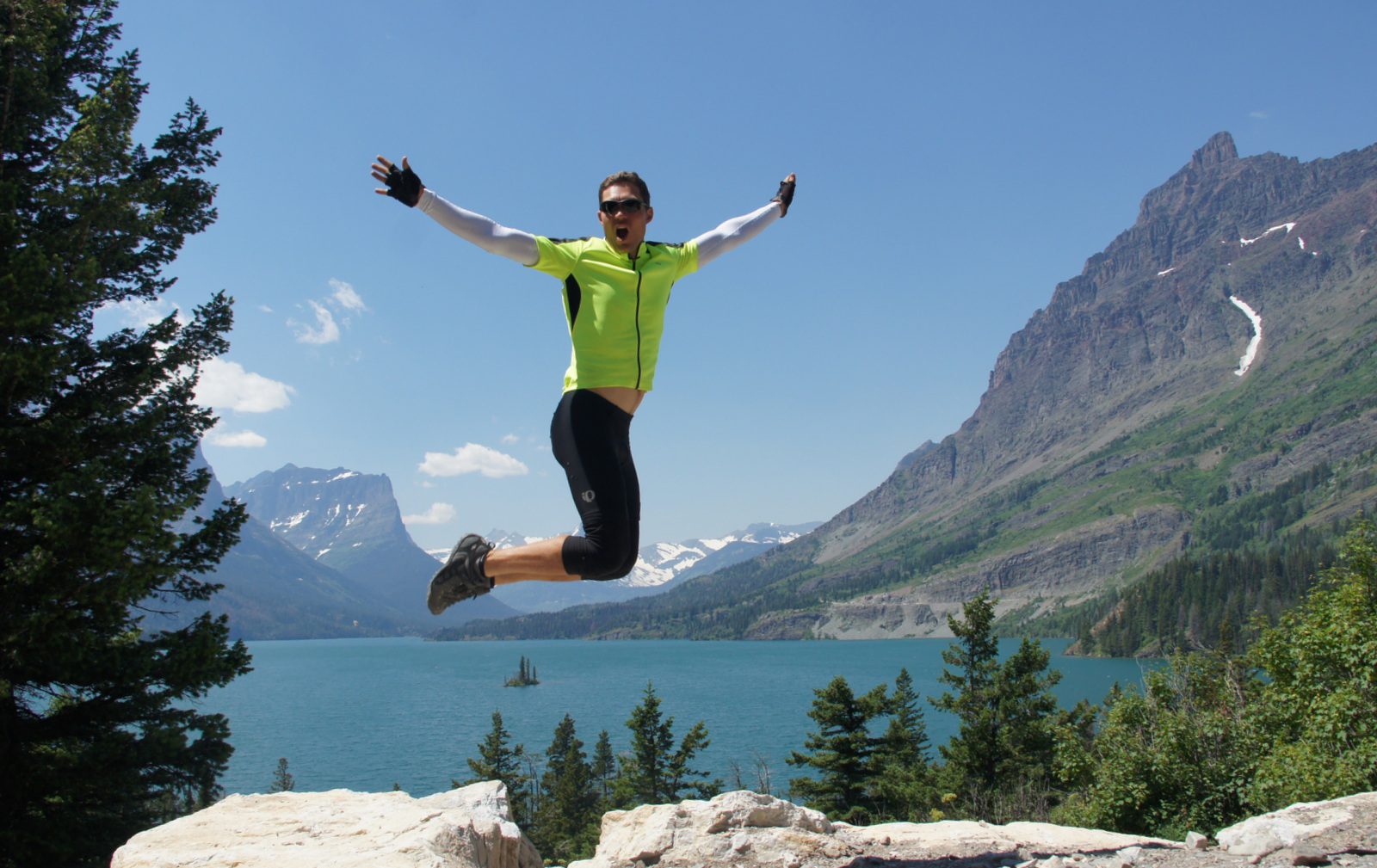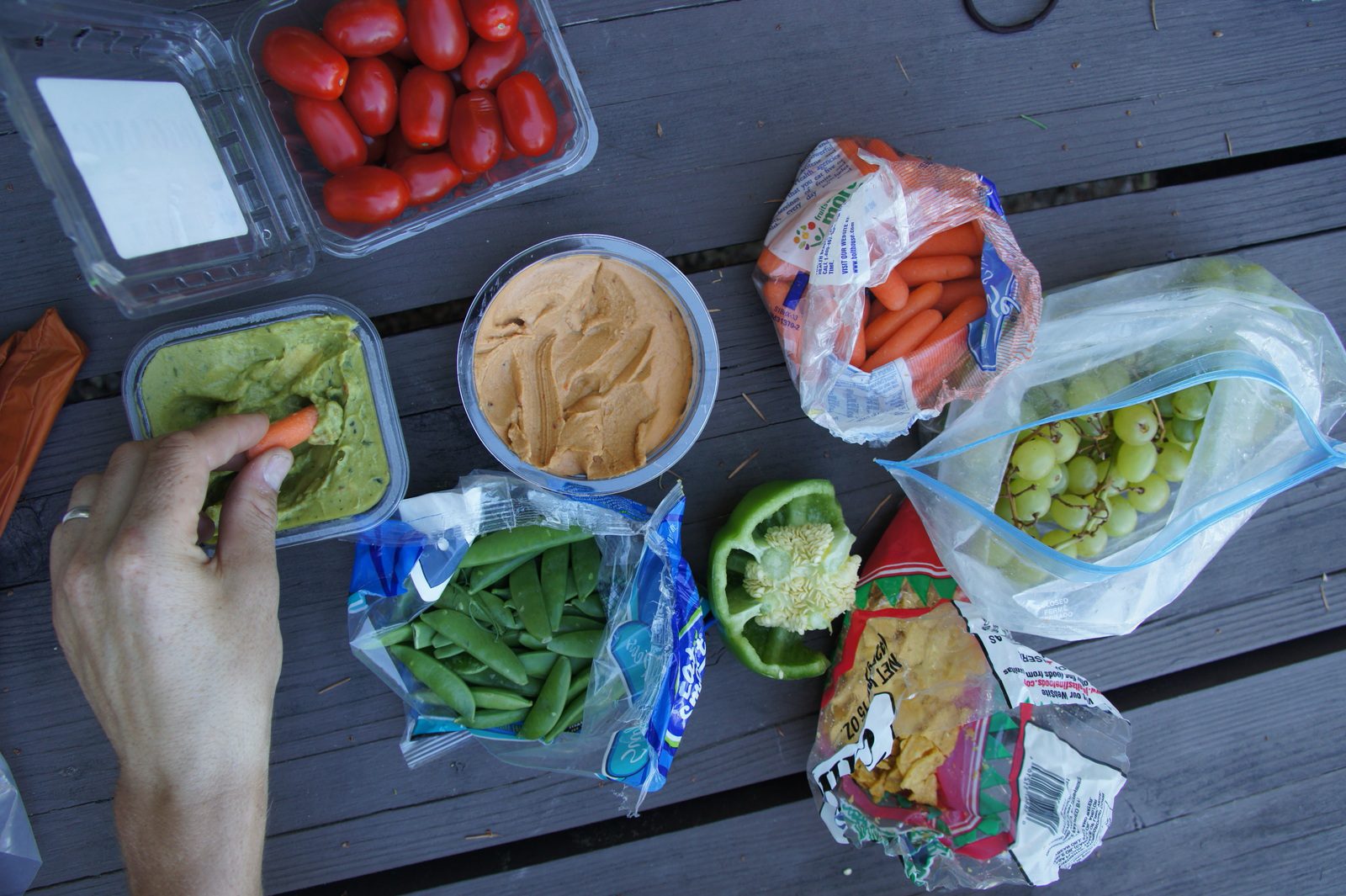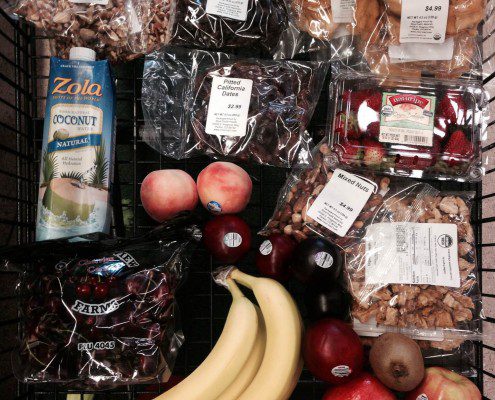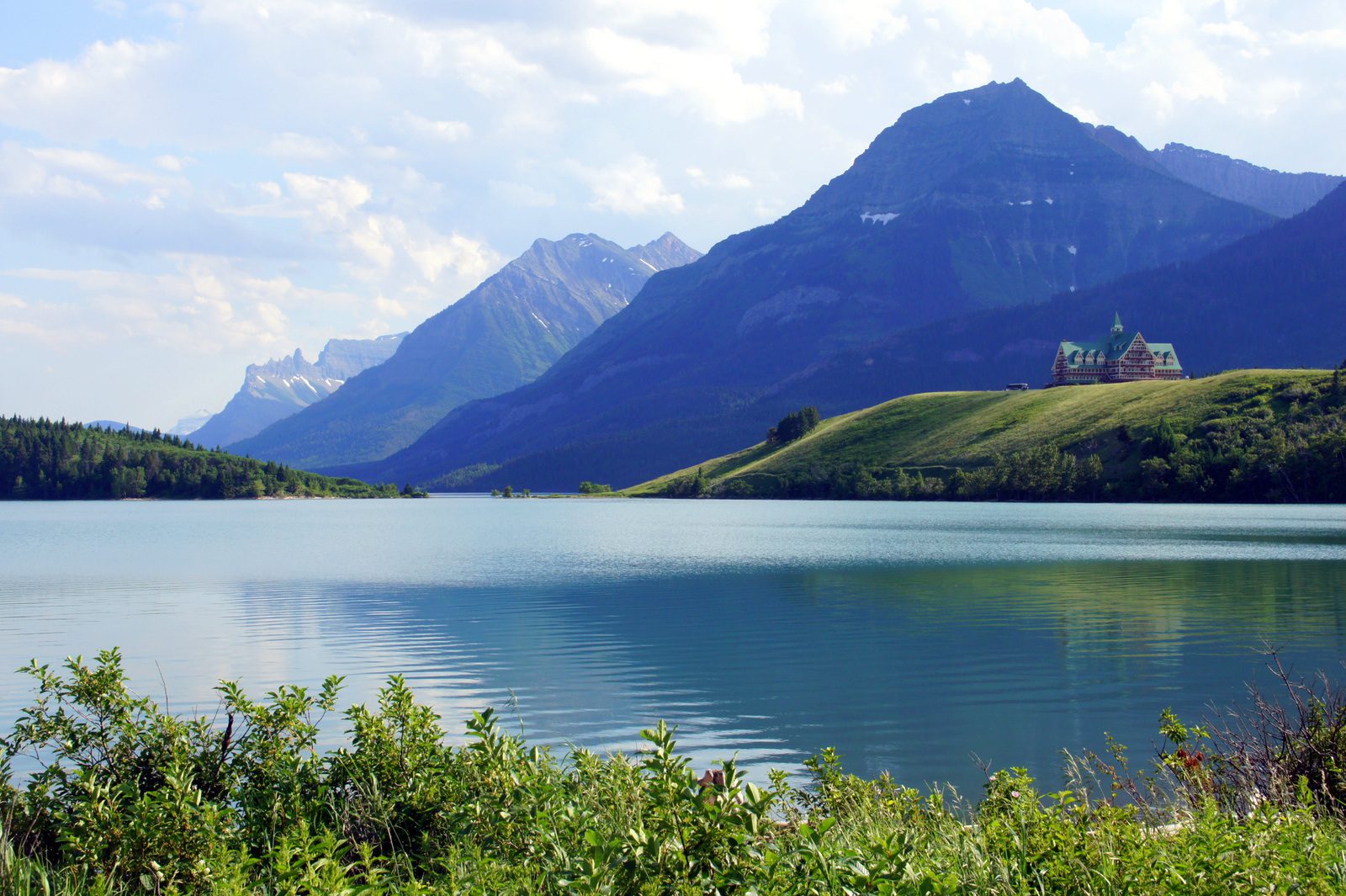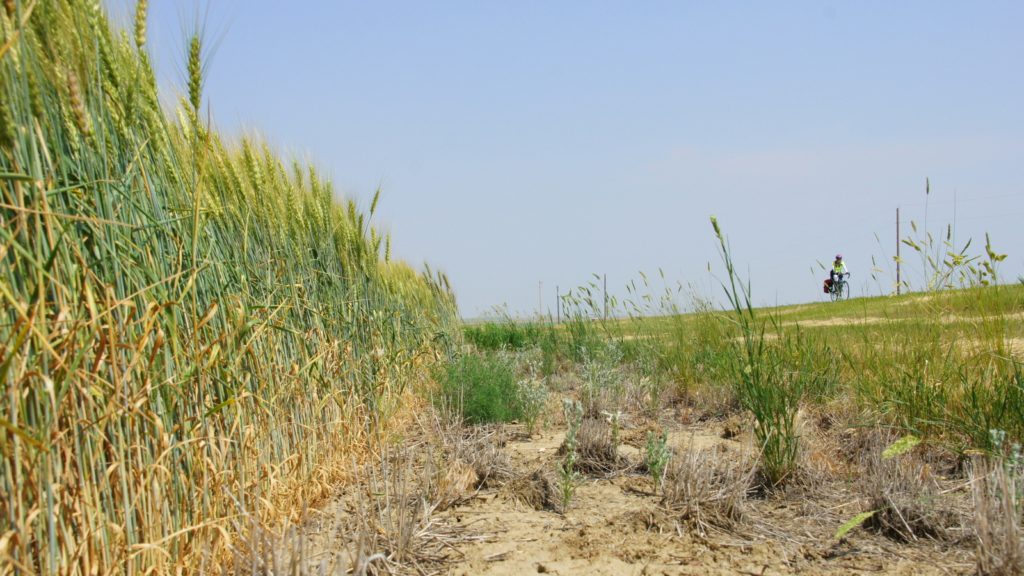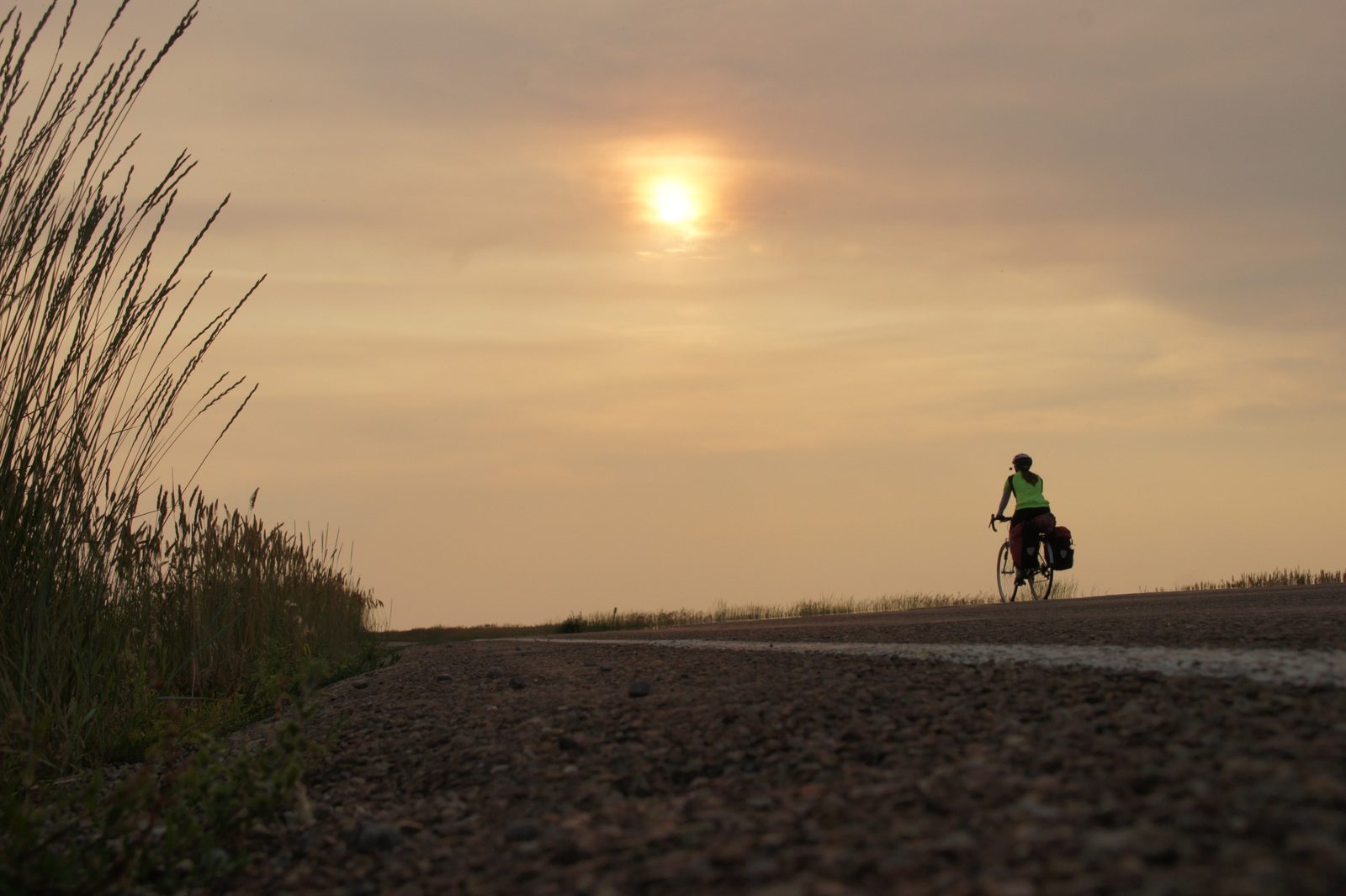Salsa Fargo 4,000 Mile Review – Why I Bought a Fargo, Not a Vaya
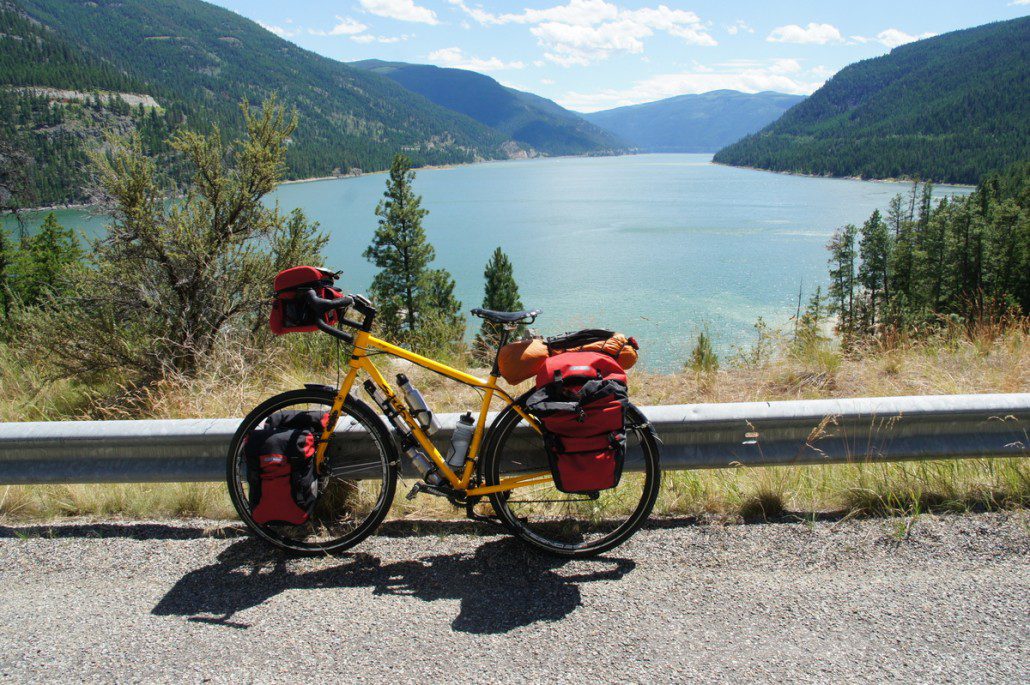
Original touring setup. It’s evolved since than! (An overlook in Montana on Lake Koocanusa in 2014.)
Update May 2019: read this recent post to see the bikepacking additions I made to the Fargo for a tour through Spain and Portugal this spring. Check out this post about Fargoing (<–totally a verb) my way across Oregon on the Oregon Outback.
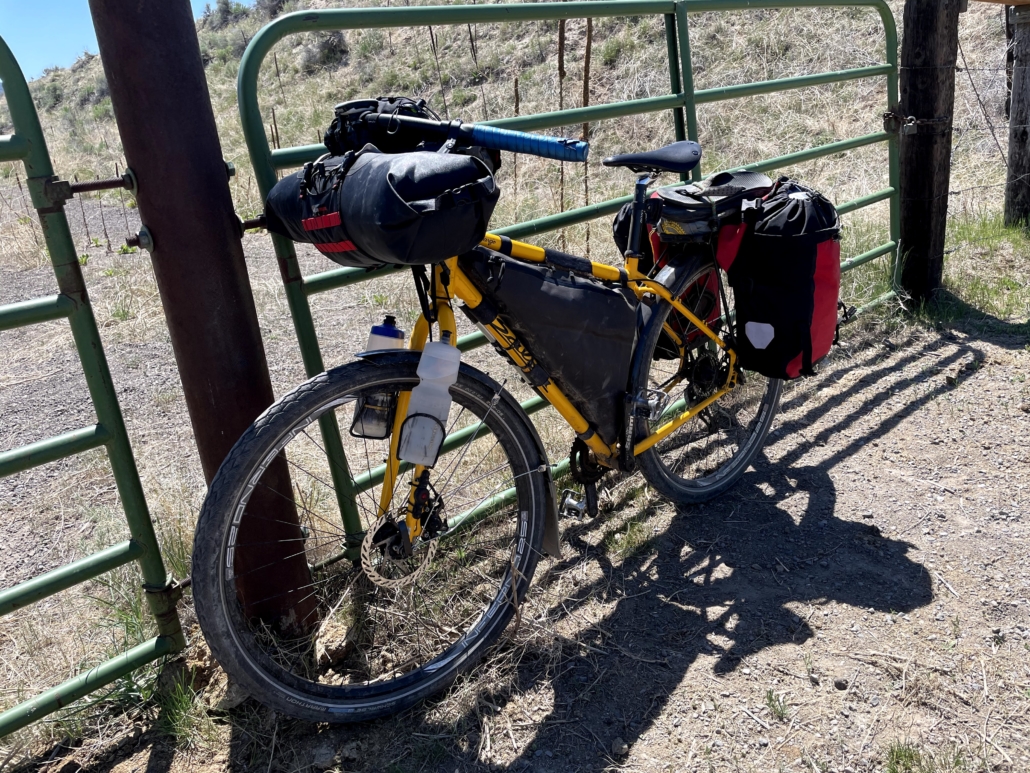
Locked and loaded on the Oregon Outback with six days of food.
I pedaled my Salsa Fargo 4,000 miles through the U.S. in summer 2014 and another 2,500 miles through Europe in 2015. This post explains why I think a Fargo is a great choice for anyone looking for a commuter or a touring bike that can handle pavement, gravel, dirt roads and light singletrack with equal ease.
There aren’t many bikes out there with such great versatility, yet most people don’t consider the Fargo for road touring. I think they should! I have no affiliation with Salsa (other than what I put on fajitas). I’m writing this only to help discuss this fairly new bike (in 2013) because I couldn’t find a comprehensive review during my search.
My rationale for Choosing the Salsa Fargo
When I started looking for a touring bike to replace my Lemond Poprad cyclocross bike, I debated forever before deciding on a bike. There are a dozen great options out there – how does one choose? After many test rides and hours combing through online forums and reviews, I bought a new 2013 Salsa Fargo 3. After our US bike tour in summer of 2014, I couldn’t be happier with my choice.
For me, it came down to three important factors: versatility, comfort and a steel frame. Weight was not a big factor since touring and commuting both add significant weight that I feel obscures the savings from, say, an aluminum or cargon frame. I also needed braze-ons for fenders and front/rear rack mounting.
Versatility
Trek, Surly, Salsa, Raleigh, and a few other models made my short list. At first, I leaned heavily toward Salsa’s well-regarded touring bike (the Vaya), largely due to Path Less Pedaled and their satisfaction with the bike.
However, I felt limited by the Vaya’s scope (limited to road touring/commuting) and not being able to fit tires bigger than 40mm for serious off-road adventures. Also, I would need to immediately switch up the Vaya’s gearing since it comes with a 30-tooth small front chain ring and 30-tooth rear, which isn’t a good ratio for spinning up steep mountain passes without destroying one’s knees and back. I’m not 21 anymore, dammit! (I’m totally going to be the 60-year-old guy on an electric bike crushing whippersnappers on climbs.)
My buddy Nate, a badass off-road tourer who throws down single week, 600 mile rides with 35k elevation gain, recommended the Fargo. It turned out to be the ideal bike for my needs and allows me to own one bike for touring plus town riding. Plus, I can run mountain bike tires (it comes stock with 2.2’s”, but I rode with Schwalbe Marathon 40’s) or slim road tires for various types of touring.
I’ve hauled up to 75 pounds of gear on the Fargo with the Salsa racks with no problems. Gravel, dirt, pavement – it handles it all.
Update 8/19/15: during our bike tour around Europe, I used Continental 42 series tires, which are designed for the fatty rims on the Salsa and allow slightly higher pressure. The bigger tires are great for touring over there.
Update spring 2019: I ran Schwalbe Marathon 50mm tires for our Spain/Portugal tour and am completely sold on the bigger tires. Don’t be a weight weenie – go bike and go tour!
By the way, dig these kinds of posts? Sign up for the free Traipsing About newsletter for more bike talk and future bikepacking adventures.
Sizing Your Salsa Fargo
What size to buy? I’m 5’10” with a 32” inseam and always fit a medium in anything – clothing, bikes, jetpacks, corsets; you name it. Sizing charts all pointed to medium. And yet when I test rode the Fargo’s various sizes, the medium and large felt practically the same due to the relaxed geometry. (It’s the most comfortable bike I’ve owned). Tough choice. Nate pointed out that I could use a bigger frame bag if I went with the large, and many other people my size rode a large also. Coupled with my positive test ride experience, I chose large.
For me, it was the right choice. Unless you have monkey arms and dwarf legs, I bet you’ll fit great on a large if you’re 5’10”-6’0”. Note that Salsa will tell you otherwise; I spoke with their customer service and they couldn’t recommend anything other than what sizing charts tell you. Forums will disagree, and who knows how it feels for you, but a large worked for me.
Salsa Fargo Models – What’s the Difference?
The other dilemma was which Fargo model to buy. There’s the Fargo 3 (cheapest model), Fargo 2 or Fargo Titanium. At $4,500, the titanium was out – I don’t plan on racing on my Fargo unless it’s to meet friends for Thai food. At face value, the Fargo 2 was great because it has better components (SRAM X5/X7 versus X7/X9 on the Fargo 3), a suspension seat and a carbon fork.
BUT that carbon fork lacked braze-ons for mounting a front rack or water bottles. Deal killer for someone like me who wants the versatility without needing multiple forks. I could have bought the 2 and switched out the fork, but it wasn’t worth it. Fargo 3 it was.
I should also add that the Fargo 3 has braze-ons with enough space for five water bottles. That can work well if you use a frame bag; there’s still room for three water bottle cages. If you don’t want to run a front rack, you can use Salsa’s Anything Cage and carry a sleeping bag or pad on your forks. I’ll be doing this for future bike packing adventures.
Note: I use Salsa’s Alternator rear rack and down-under front rack. They work great – I carried 50 pounds on the rear rack on some seriously rough terrain in Europe and had zero issues.
Handling
The Salsa is a solid bike. If you’re used to a carbon rocket or a tight geometry touring bike, it’s going to feel a big sluggish at first. I had those leanings…but only for a few hours. And after two days on it, I realized my wrists weren’t hurting, my back felt great and it was a joy to ride, both uphill and downhill. With the low-rider front rack from Salsa, loaded panniers (I used Ortlieb Bike-Packer Plus for rear and Sport-Packers for the front) still allowed smooth handling with no chatter or wobbling, even at 40 mph down a mountain pass.
Gearing, Chainrings and Other Boring Gearhead Info
The Fargo is basically the same frame weight as the Vaya. It comes with SRAM DoubleTap shifters, which some people may not like. Such as me! I’m a Shimano guy and this is my first bike with SRAM. No reason to be concerned – any Luddite gorilla can figure out the shifting. Call me a Shimano heretic, but I actually grew to like the DoubleTap mechanism.
Gearing-wise, the Salsa come stock with a mountain double setup. I run 26/42 up front and an 11-36, 10-speed rear cassette, though I believe the new models are stock at 26/39, which would also work great. The sizeable head tube allows for a 100mm suspension fork to be installed with clearance for mountain bike tire, which results in a great off-road touring rig. All that together makes this a killer rig for the Continental Divide ride from Banff to Mexico, which is on my bucket list.
Only a double front chainring, you gasp into your PBR (dude, why are you drinking at work?). Yep, that’s right. I’m of the humble opinion that a triple front chainring is unnecessary for bike touring. Who wants to pedal downhill at 50 mph on a loaded bike? Self-imposed death sentence, no thanks. (And stop dreaming about tailwinds where you need a top-gear chainring. You’ll get one tailwind during your entire tour, and you’ll probably be eating lunch when it happens.) In fact, I spent 3/4 of my time touring in the small chainring. Go double and thank me later.
Disc Brakes Rock
Don’t listen to rim brake snobs. Disc brakes on a loaded bike are fantastic. You’ll agree the first time you’re riding downhill in the rain and can actually stop without sacrificing a foot into spinning spokes. They’re easy to adjust (albeit occasionally squeaky) and won’t heat up your rims on the non-rainy descents. If you’re touring in Mongolia where parts are more than a falcon flight away, maybe rim brakes make sense. Most other places, I bet you’ll be fine. Brakes are overrated anyway; ask any fixie rider!
Riding Position and Comfort
The Salsa Fargo is one of the most comfortable bikes I’ve ever ridden. I usually slam my bars down as low as possible on mountain bikes for handling purposes, but that’s totally unnecessary for bike touring or commuting. Instead, my seat was slightly lower than the handlebars and it felt like sitting in a throne. For climbing, the stock Woodchipper handlebars were fantastic; their flared shape provided great hand position variation during long days. And saying “Woodchipper bars” is like wearing a flannel shirt and chopping two cords of wood in 5 degree weather – it makes you a badass.
Downsides
Thinking hard for this part, but can’t come up with anything! (Seriously, I’m not getting paid to write this.) The weight is all I’ve got – 36.5 pounds for my bike with fenders and front/rear racks installed was the final tally. Other than a few flats, I experienced zero issues with my Fargo over our 4,000+ mile bike tour, not to mention shorter rides post-tour. The bike feels bulletproof, the drivetrain wasn’t even noticeably worn at the end, and my body felt great afterward.
Final Thoughts
If you’re looking for a serious ass-kicker of a bike with tons of versatility for whatever two-wheeled adventure you’re contemplating, the Salsa Fargo is worth considering. After one big tour, I’m stoked to stuff mine in a box this coming summer, fly over the Atlantic and rampage all over Europe starting in early June.
Any other questions? Drop me a line via email or in the comments. Otherwise, cheers and happy bike shopping!
Dakota
P.S. Please contribute comments or thoughts below. This review is just my opinion and perhaps you have a different take on things. Share away!
Update May 2019: here’s the bikepacking-style updates I made to my Fargo for our tour through Spain and Portugal.
